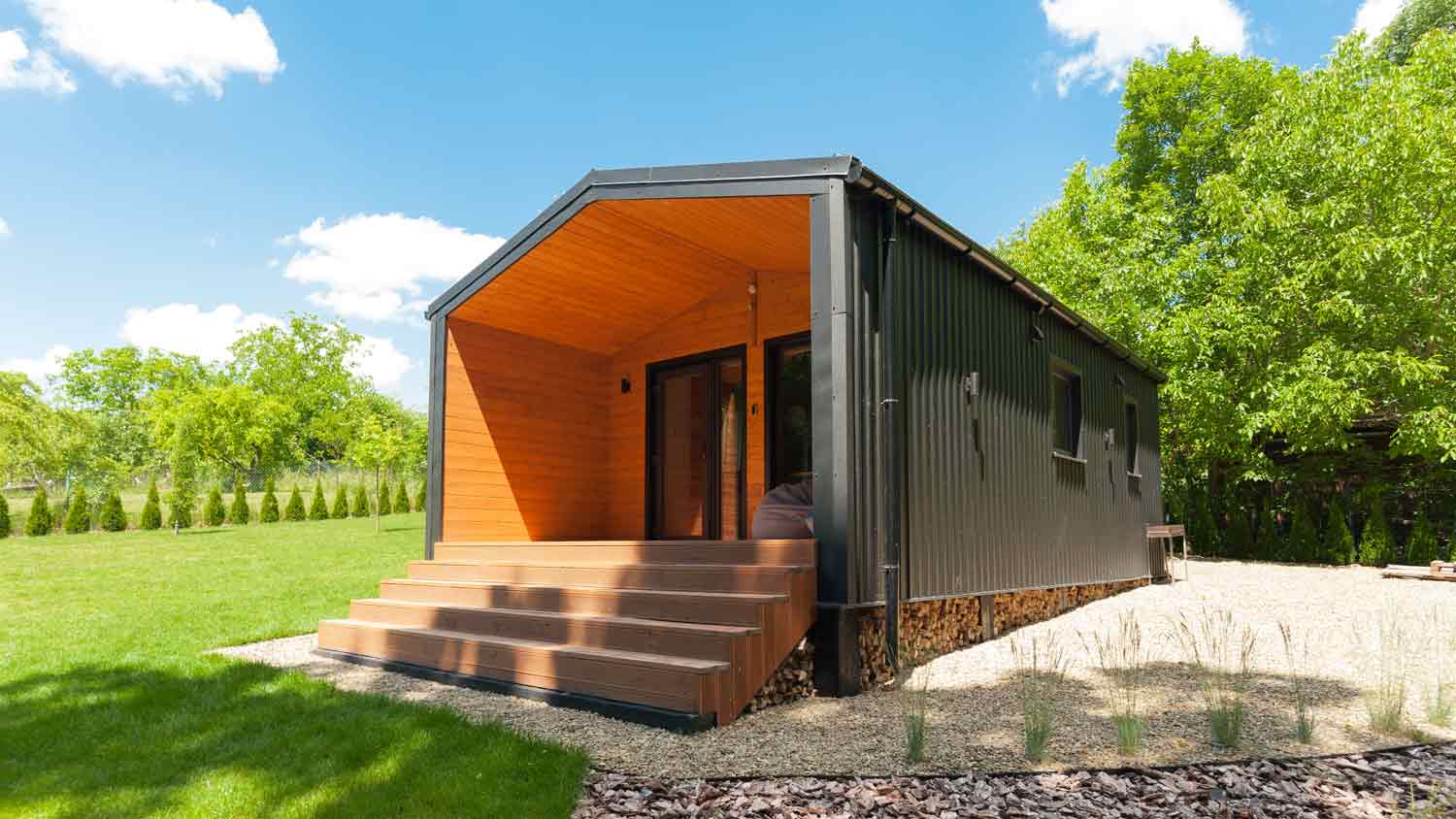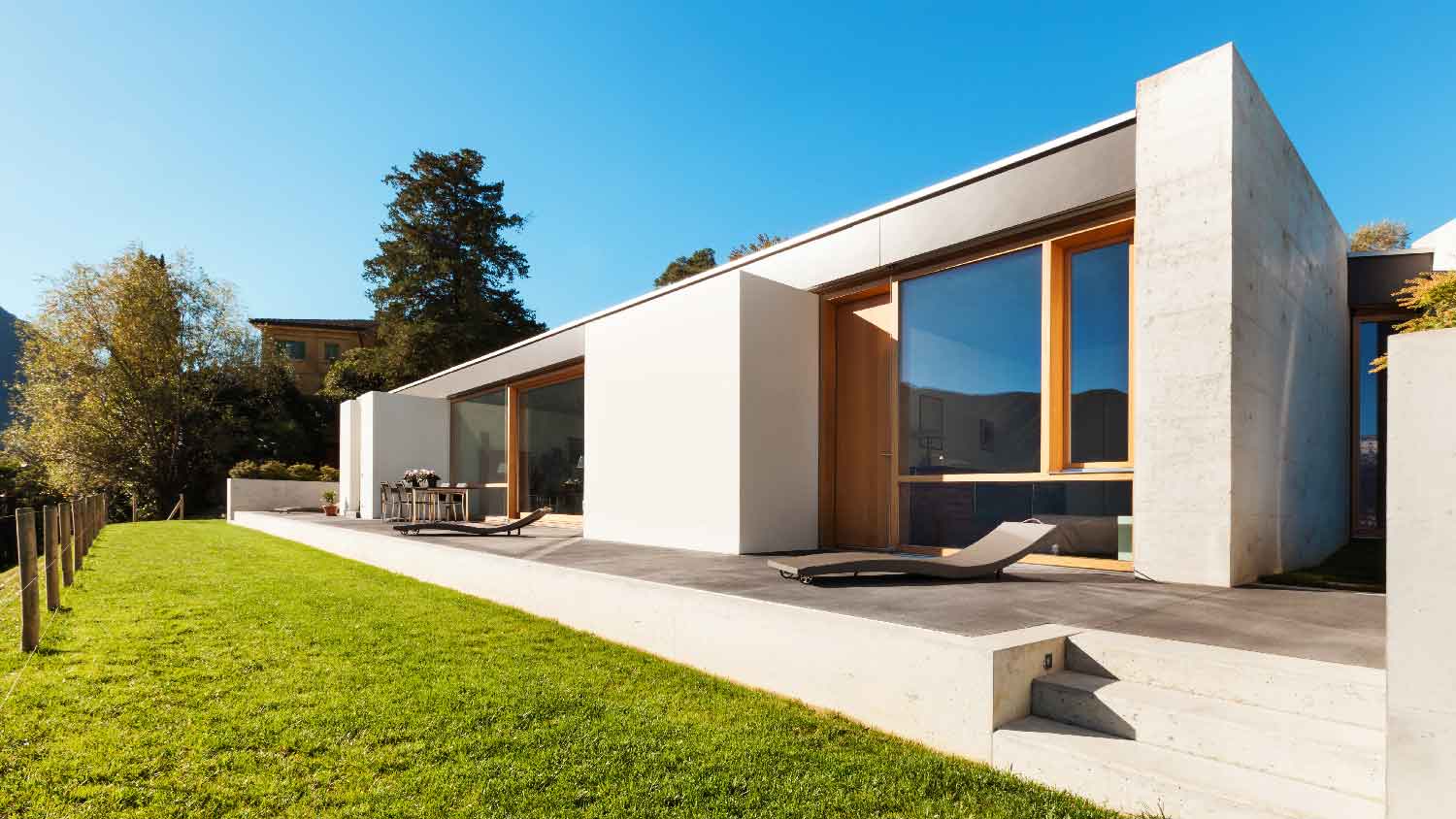How Much Does It Cost to Build a Brick House? [2025 Data]
The cost to build a brick house averages $350,000, and most builds total between $150,000 and $600,000. Costs will depend on the house size and style, the quality of the other materials, the type of brick siding you choose, and more.


Actual brick construction is rare in modern builds, and brick facade is the standard for brick homes.
A brick home will cost 5% to 10% more than a home with standard siding.
House size and material quality are the biggest cost factors to consider.
Brick may cost more up front, but it’s more energy-efficient and can save money over time.
The average cost to build a brick house is $350,000. Your total could sit as low as $88,000 for a small, 800-square-foot home with budget-friendly materials and thin brick veneer, and prices can climb as high as $1,650,000 for a larger, 2,000-square-foot house with double-brick wall construction and high-end finishes.
House Size
The size of the home you’re looking to build is one of the most important cost factors to consider. You’ll pay between $110 and $550 per square foot to build a brick house from the ground up, with an average of $165 per square foot. Every square foot you add will push your total up.
| House Size (sq. ft.) | Average Cost | Cost Range |
|---|---|---|
| 800 | $132,000 | $88,000–$440,000 |
| 1,000 | $165,000 | $110,000–$550,000 |
| 1,500 | $247,500 | $165,000–$825,000 |
| 2,000 | $330,000 | $220,000–$1,100,000 |
| 2,500 | $412,500 | $275,000–$1,375,000 |
| 3,000 | $495,000 | $330,000–$1,650,000 |
Custom Homebuilder Costs
An average of between 40% and 60% of your total is for labor, and the majority of that will go toward hiring a custom homebuilder near you in most cases. Custom home builders have on-staff contractors and specialists who can tackle most or all of the aspects of a custom home build, from the foundation and framing to installing brick siding and interior finishes. On average, a custom homebuilder will cost between $140,000 and $210,000.
Below are some individual jobs your homebuilder will complete and the average cost of each for comparison.
Pouring the foundation: $4,000–$14,800
Framing the house: $1,400–$7,600
Roof installation: $5,800–$13,200
Installing the kitchen: $35,000–$95,000
Architect Costs
Unless you’re working from pre-set plans that your homebuilder provides, you’ll need an architect and a structural engineer to design your brick home for you. Hiring an architect costs an average of $6,600, but your cost can sit higher or lower depending on how much of the build is custom and the work you need your pro to do.
Drawing up blueprints: $800–$2,700
Drafting as-built drawings: $700–$1,300
Creating structural drawings: $500–$2,000
Masonry Expert Costs
Many custom home builders will be able to install a brick facade or brick veneer on the exterior of your home, but if you’re looking to build a home with genuine brick walls, you’ll likely need to hire a masonry expert near you. This is an uncommon way to construct a modern brick home, and it’s much more common with a concrete block house. You’ll need a specialist if this is the route you want to go. Expect to add between $6,000 and $20,000 to your total for genuine brick wall construction.
Additional Pros to Consider Hiring
Hiring a custom homebuilder will usually mean you get a full suite of professionals who can build your home from start to finish, but you’ll need to hire individual experts if you don’t hire a homebuilder to act as your general contractor. Below are some average costs to hire other experts you may need throughout the home-building process.
Foundation contractor: $5–$37 per sq. ft.
Roofing contractor: $5,800–$13,200
Plumber: $10,000–$20,000
Electrician: $1,500–$10,000
HVAC technician: $5,000–$12,500
Drywall installer: $1,000–$3,200
Interior painter: $2–$6 per sq. ft.
Flooring installer: $2–$25 per sq. ft.
Landscaping pro: $1,200–$6,300
Cost by Location
Where you live plays a crucial role in the cost to build a brick house due to local labor costs scaling with the cost of living, as well as the local availability of materials. You’ll pay more to hire contractors to build a home in high-cost states like California and New York, as well as in areas near major metropolitan areas.
| State | Average Cost |
|---|---|
| California | $507,000 |
| Florida | $358,000 |
| Georgia | $320,000 |
| Illinois | $334,000 |
| Michigan | $323,000 |
| New York | $432,000 |
| North Carolina | $342,000 |
| Ohio | $332,000 |
| Pennsylvania | $332,000 |
| Texas | $324,000 |
Additional Cost Factors
There are some other important cost factors to consider if you want to make sure you get an accurate estimate for your brick house construction cost.
Type of Brick Construction
The type of brick house you build can swing your costs below or well above the average. Most modern brick homes are stick-built houses with brick facades, and there are a few types of brick siding you can choose from that vary in price.
| Masonry Material | Cost Range (per sq. ft) |
|---|---|
| Face brick siding | $4–$8 |
| Thin brick veneer | $3–$10 |
| Faux brick veneer | $4–$15 |
| Faux brick panel | $6–$13 |
| Real brick siding | $10–$20 |
Genuine brick construction, which involves laying brick and mortar over your foundation to construct real brick walls, is much less common in modern construction. If you do decide you want real brick walls, you can expect to add $6,000 to $20,000 to your total.
Permits
Permits for new home construction cost between $500 and $2,000, depending on your local municipality and the fees your building department charges for building permits. This single construction permit will cover the actual construction, as well as utility permits for plumbing, electrical, and HVAC.
Permits can actually be quite expensive. Talk to your contractors before starting your project to understand how much the required permits will cost you.
Land and Site Prep
Land can cost anywhere from $10,000 to $250,000 or more, depending on the location and size, and land cost isn’t included in any of the average pricing mentioned above. You may also need to pay for site preparation, like land clearing or grading, depending on the state of the land you’re building on.
| Item | Cost |
|---|---|
| Land clearing | $1,400–$6,200 |
| Land grading | $1,000–$3,400 |
| Perc test | $750–$1,900 |
| Soil test | $700–$2,200 |
Utilities
Running utilities to your build site for the first time can add between $6,500 and $30,000, and prices can climb even higher if you’re far from existing hookups.
You should also consider the cost to install plumbing, electrical, and HVAC systems in your new home.
| Home System | Cost to Install |
|---|---|
| Electrical | $1,500–$10,000 |
| HVAC | $5,000–$12,500 |
| Plumbing | $10,000–$20,000 |
| Septic | $3,600–$12,400 |
Interior and Exterior Finishes
Finishing the interior and exterior of your new brick home will cost between $85,000 and $300,000. You can expect $50,000 to $175,000 to go toward interior finishes like drywall, painting, flooring, kitchen installation, and bathroom installation, and between $30,000 and $125,000 to go toward exterior finishes, like brick siding, gutters, trim, and landscaping.
Remodel vs. New Construction
Remodeling a home costs an average of $52,000, and most projects total between $19,000 and $88,000, so it’s a much more affordable option than building a new construction brick home. Even if you add the cost of brick siding to the total, you’re looking at an average of just $72,000, which is a far cry from the $350,000 you’d pay to build a new brick house from scratch.
While remodeling your existing home and adding brick siding is almost always going to be more affordable, there are some other things to consider. Remodeling means keeping your existing square footage, so you’ll be more restricted in what you can do. Remodeling may not have as much of an impact on home efficiency as building new construction, so long-term costs could end up being higher with a remodel, especially if you have an old home and live in an extreme climate.
How to Save on Brick House Construction Costs
Building a brick house can cost as much as $1,650,000 and will be 5% to 10% more expensive than building a standard home with vinyl siding. Luckily, there are a few ways you can save on your build costs.
Choose brick veneer over real brick construction: Modern brick homes are stick-built with affordable brick veneer on the exterior. Going this route over genuine brick construction can save you thousands.
Prioritize efficiency: Adding insulative brick siding boosts your home efficiency, and prioritizing efficiency when it comes to insulation, lighting, HVAC equipment, and roofing can help save you even more money on utility bills over time.
DIY what you can: It’s best to leave most aspects of home construction to professionals, but you can save thousands of dollars in labor by tackling some of the finishing work yourself, like installing drywall, painting, and laying flooring.
Choose more affordable materials: Materials account for 40% to 60% of your total, so going with more budget-friendly options at each step can save you tens of thousands of dollars, especially on larger homes.
How Angi Gets Its Cost Data
Home is the most important place on earth, which is why Angi has helped more than 150 million homeowners transform their houses into homes they adore. To help homeowners with their next project, Angi provides readers with the most accurate cost data and upholds strict editorial standards. We extensively research project costs to develop the pricing data you see, so you can make the best decisions for you and your home. We rely on reputable sources, including the U.S. Bureau of Labor Statistics, academic journals, market studies, and interviews with industry experts—all to ensure our prices reflect real-world projects.
Want to help us improve our cost data? Send us a recent project quote to costquotes@angi.com. Quotes and personal information will not be shared publicly.
Frequently Asked Questions
Modern brick houses are really stick-built homes with a brick facade for aesthetic purposes only, so most have framing. With genuine brick construction, most homeowners install furring strips over the interior of the brick and then install drywall over those strips to cover the brick wall, so they don’t have traditional framing.
Modern brick homes have a brick facade over standard framing and sheathing, so the brick offers minimal added structural stability. A home with traditional brick construction is more durable than a stick-built home, as the double-layer brick walls and rebar resist higher lateral wind loads and support heavier loads up top, as well.
Whether you’re installing brick siding over a traditionally-framed home or you’re using genuine brick construction to build, the biggest downside of a brick house is the higher cost you’ll pay for the materials and labor. Real brick construction also means your home build will take longer, as it’s more time-consuming to construct brick walls than it is to frame out your home.














